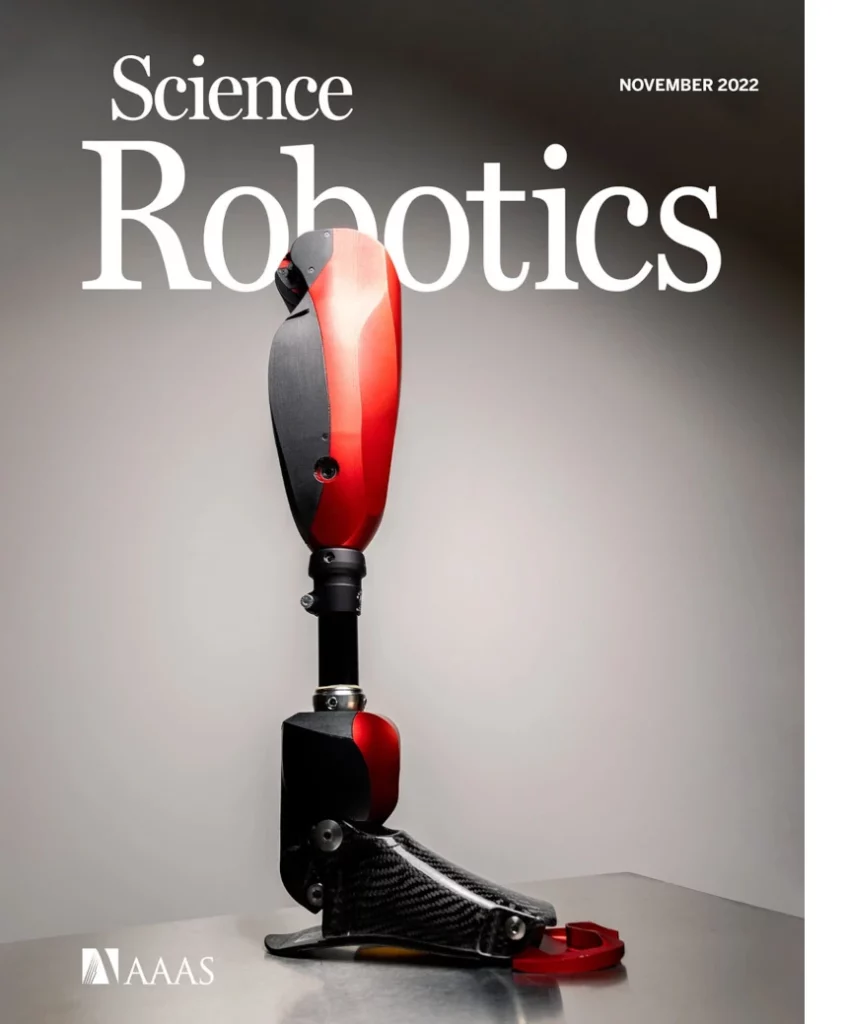
It was a really big deal when the Esper Hand made the cover of Time a couple weeks ago. Making the cover of Science Robotics doesn’t sound quite as impressive, but the prosthesis that appeared there last month—the Utah Bionic Leg—could be headed to newsstands before too long.
Developed over the last half-decade by University of Utah engineering prof Tomasso Lenzi, the device has been hailed as “the most advanced AI-powered prosthesis ever created.” That hype is backed up by hard cash: Ottobock bought into the project earlier this year, putting it on the fast track to commercial introduction.
“We want to make sure the good ideas go from the lab to the market at soon as possible,” Lenzi says. “Engineers in my lab and from Ottobock’s research-and-development division will work together. We’re trying to create a partnership that will enable us to combine the best of academia with the best of industry.”
Designed for above-knee amputees, the Utah Bionic Leg combines powered knee and ankle joints with advanced AI, enabling wearers to walk with less effort than existing bionics and to navigate stairs, inclines, and other variable terrain with greater ease. Its unique features include a bionic big toe that helps with balance and stability, along with a “smart transmission system” that enables users to effortlessly “shift gears” and achieve a natural, intuitive gait. It’s extremely lightweight, at roughly six pounds, and its battery features a passive mode that extends its life “indefinitely” for walking on level ground.
We’ve been tracking the progress of the Utah Bionic Leg since early 2021, when the project scored $3 million in development funds from the National Science Foundation and the National Institutes of Health. The Ottobock partnership puts considerable administrative muscle behind the prosthesis, which should accelerate its journey through the regulatory maze. Lenzi’s lab also gets quite a bit of new high-tech bling out of the deal, including a motion-analysis system, force-sensing technology, and 3D motion-capture cameras. The facility will be known henceforth as the Hans Georg Näder Laboratory, after Ottobock’s CEO and chairman.
The current iteration is lighter and less bulky than earlier versions. Here’s a glimpse of it in action:
“Preclinical tests with three participants with an above-knee amputation showed that the Utah Bionic Leg provided gait kinematics and kinetics similar to nonamputee individuals,” Lenzi & Co. concluded in their Science article. “The preliminary clinical validation showed the potential of the proposed powered prosthesis to replicate the key biomechanical functions of the biological leg during walking, stair ascent, and stair descent.” The device is still a couple of years away from the market, but Ottobock’s involvement puts it on the front burner.
The full paper is open source, so you can get all the nitty-gritty about how the Utah Bionic Leg’s motors, sensors, actuators, accelerometers, gyroscopes, and other gear work together to replicate normal leg function. It that sort of thing is your jam, read the whole thing here.